A few years ago, I posted a blog giving a bit of background about the officers who served as the Members of the Court at Josef’s court martial in early August 1941. I was able to track down fairly good info on all but one of the officers, drawing a blank on Major R.C. Alexander, Irish Guards, Guards Depot, one of the Waiting Members. I was unable to dig up any further info for my book on Josef, The Spy in the Tower, published in 2019. But a few months ago, I gave Major Alexander another try…
Tracking down Major R.C. Alexander
Part of the problem with Major Alexander was the fact that I had no first names to work with. So, I decided to sift through the British Army Lists for the period 1941-1942. I tracked down the section for the Irish Guards and… voila… found this entry in 1942 (Part 1 Volume 1).

Given that Alexander was made a Brevet Major on 2 July 1941, my next step was to sift through the Gazette and see if I could find that announcement. I found this tidbit in the Supplement from 18 November 1941.

And a second entry from 1950 (using his regimental number – 15554) in which Alexander “exceeded the age limit of liability” and was removed from the Reserve of Officers, effective 30 August 1950.

None of these entries were all that helpful since none of them gave his first name. I found a few mentions of R.C. Alexander on various military forums but, again, no first names.
The break in the case came thanks to me clicking through various Google Search results for +”R.C. Alexander” +”Irish Guards” and finally hitting upon one that had both the initials “R.C.” AND the first names!
The key was the Local History Journal (Volume 21) published in 2015 by the Federation of local History Societies – Conascad na gCumann Staire Aitiula. The online journal had this little write-up on Major Alexander:
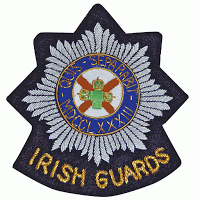
ROBERT CHRISTOPHER ALEXANDER A member of a distinguished Northern Irish family, his grandfather being Bishop of Meath and two of whose distant cousins were Archbishop of Armagh and Earl Alexander of Tunis. R.C. Alexander, from Port Glenone, Co. Antrim, joined the army in 1919, being too young to take part in WW1. In WW2 he served in France as an officer in the Irish Guards and took part in the final invasion of Germany. After the war he retired to Coolalta, near Carrigadrohid, Co. Cork, where he died. His wife, Laura Ina Madeleine Lenox-Coyningham, is buried beside him, but separately, in an unmarked grave. (Her request). From a prominent Derry Unionist aristocratic family, her father recruited and, at his own expense, outfitted two regiments of the Ulster Volunteers – who were to die in great numbers at The Somme
And… with his first names… we are off and running!
Robert Christopher Alexander
Robert Christopher Alexander was born 12 February 1900 in Dublin to Robert Arthur Moloney Alexander and Emilia Olivia Nicholson. Two older children, Vera Grace (b1894) and Clare Florinda (b1896) likely doted on their baby brother.
Alexander’s father (born 1867) held the office of Deputy Lieutenant and was also a Justice of the Peace. The Local History Journal mentioned that Alexander’s grandfather had been the Bishop of Meath. It was actually his great-great-grandfather, Nathaniel Alexander, who was Bishop of Meath, while Alexander’s great-grandfather was the Archdeacon of Down. Alexander’s grandfather, Robert Alexander, worked for the Honourable East India Company Service.
If you go far enough up the Alexander tree (early 1700s), you can link both William Alexander (Bishop of Armagh in the late 1800s) and Earl Alexander of Tunis to our Alexander’s lineage. (Thank you Peerage site for tracing all these lineages!)
Irish Guards
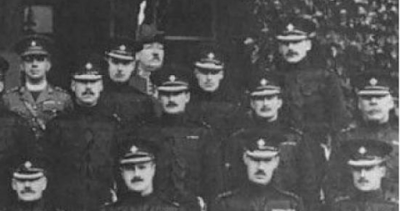
For this portion of the photograph, the third row caption has (l to r): Rev. J. McGuinness, Chaplain; 2/Lt Montagu-Douglas; Capt and Quartermaster H. Hicke MBE, MC; Lt. R.C. Alexander
Alexander was educated at Eton College and attended the Royal Military College at Sandhurst. A London Gazette notice from August 1919 noted that he was granted the rank of 2nd Lieutenant with the Irish Guards effective 16 July 1919. Alexander appears to have been a career officer and by 1922 had been promoted to the rank of Lieutenant with the Irish Guards.
On 15 February, 1924, Alexander boarded the SS Mongolia at the port of London, bound for Gibraltar. He gave his occupation as “officer” and his residence as Portglenone House in County Antrim. Perhaps this was a holiday trip.
A photograph of the officers of the 1st Battalion, Irish Guards at Aldershot, taken in 1926, is included in a 2016 book, Up the Micks: An Illustrated History of the Irish Guards. The photograph caption notes that Lt. R.C. Alexander is at the right end of the third row. Unfortunately, there is one name missing, so it isn’t clear if Alexander is the individual at the far right (with the moustache) or the second from the far right. I am presuming that the person third from the right, with the different hat is the Captain and Quartermaster Henry Hickie MBE, MC (an interesting character in his own right). The photograph is interesting too in that all of the officers appear to be dressed in their frock coats. Alexander would have been 26 years old
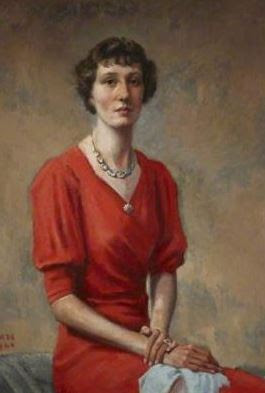
The following year, on 1 March 1927 Alexander was appointed Battalion Adjutant with the Irish Guards. After that we lose track of him for a few years with just tantalizing glimpses of his activities.
In 1931, he sat on a grand-jury at the County Antrim Spring Assizes in Belfast.
Two years later, on 5 October 1933, in Westminster, Alexander married Laura Ina Madeline Lenox-Conyngham (b1907), daughter of Edward Fraser Lenox-Conyngham and Elizabeth Madeline Gunning. The following year, Alexander retired from the Irish Guards, perhaps because of his marital status, and joined the Reserve of Officers.
He and his wife returned to Ireland, residing at Portglenone, County Antrim. From 1935 to 1938, Alexander put his name forward for High Sheriff of Country Antrim. He was finally successful in 1938 and “Captain Robert Christopher Alexander” was appointed to the office of High Sheriff of County Antrim by the Governor of Northern Ireland. One 1938 newspaper also had the acronym “J.P.” behind his name, which would indicate that he was also a Justice of the Peace.
Second World War

After the outbreak of war in early September 1939, Alexander made his way down to London where, on 29 September, he was recorded as a guest at Brown’s Hotel, 21/4 Dover Street. This posh hotel, built in the 1837, and expanded over the years, had welcomed such distinguished visitors as Rudyard Kipling, Joseph Conrad, Theodore Roosevelt, Alexander Graham Bell, Mark Twain and various members of European royalty. On the 1939 National Register form, Alexander noted that he was a “Captain, Irish Guards, (Reserve of Officers)”. His wife, Laura was also listed at Brown’s Hotel but her name was stroked out, so I’m not sure if she left or…
What role Alexander played during the war is hard to identify. We know that he served as a Waiting Member at Josef’s court martial in August 1941. His obituary noted that he was regimental adjutantn at headquarters in London in 1942.
According to the Local History document, Alexander served in France as an officer in the Irish Guards and took part in the final invasion of Germany. In addition to that, I have been able to find a few tidbits that mention his name.
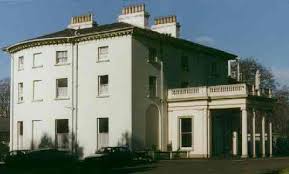
The Fleaglass site has a set of binoculars (ca 1910-1930) which apparently belonged to our friend Alexander. His name and regiment are on the bottom of the leather case. When he might have used these is unknown.
In November 1943, Alexander was tasked with writing a condolence letter to the parents of Sergeant Chris O’Dowd, an Irish guardsman who had joined the SAS (Special Air Service) and been killed in Italy on 6 October 1943.
On 5 January 1945, Alexander was appointed Deputy Lieutenant to County Antrim. That same year, he also wrote a letter of congratulations to Lance Corporal Patrick Gerald Brennan who had been wounded in Normandy in August 1944. Brennan received the Military Medal at the investiture on 18 July 1945 and a letter of congratulations from Major R.C. Alexander accompanied the ribbon.
After the War

(from Historic Graves site)
After the war, Alexander retired to his house, Portglenone House in Country Antrim. The house had been used by the American Army during the war as an entertainment centre and it must have taken something to make it habitable again. In 1948, Alexander sold the house to a Cistercian order who repurposed the building into Our Lady of Bethlehem Abbey. One little interesting tidbit of news notes that Sir Roger Casement (executed for High Treason in 1916) had stayed at Portglenone House in the early 1900s when Alexander was just a youth.
After selling Portglenone House, Alexander and his wife moved to Coolalta Cottage, Killinardrish, County Cork in southern Ireland. Coolalta was as farmstead and Alexander spent his retirement breeding Aberdeen Angus cattle. Two years later, in 1950, his name was removed from the Reserve of Officers list.
Alexander died on 13 April 1968 without any children. He is buried at in Christchurch, a small graveyard near the village of Coachford, Magorney.
His wife is apparently buried next to him in an unmarked plot (her request). Up until 1976, Laura was apparently still living at Coolalta Cottage. Her date of death is unknown.
It is good to have tracked down the final Waiting Member of Josef’s court martial panel. He has gone from being a faceless, character-less name on a page, to a real person.
Sources
The Peerage – entry for Robert Christopher Alexander
Up the Micks!: An Illustrated History of the Irish Guards. James Wilson. Pen & Sword. 2016. – Via GoogleBooks – has a 1926 picture which includes Lt. R.C. Alexander.
He Who Dared and Died: The Life and Death of an SAS Original – Chris O’Dowd. Gearoid O’Dowd. Pen & Sword. 2011.
Brown’s Hotel – history
Site with information on Lance Corporal Patrick Gerald Brennan
ACR Heritage – post about the Christchurch cemetery near Coachford, Ireland
Ancestry – genealogy records
(Irish Guards pre-WW2 postcard image – “St. James’s Palace” by Leonard Bentley is licensed under CC BY-SA 2.0)
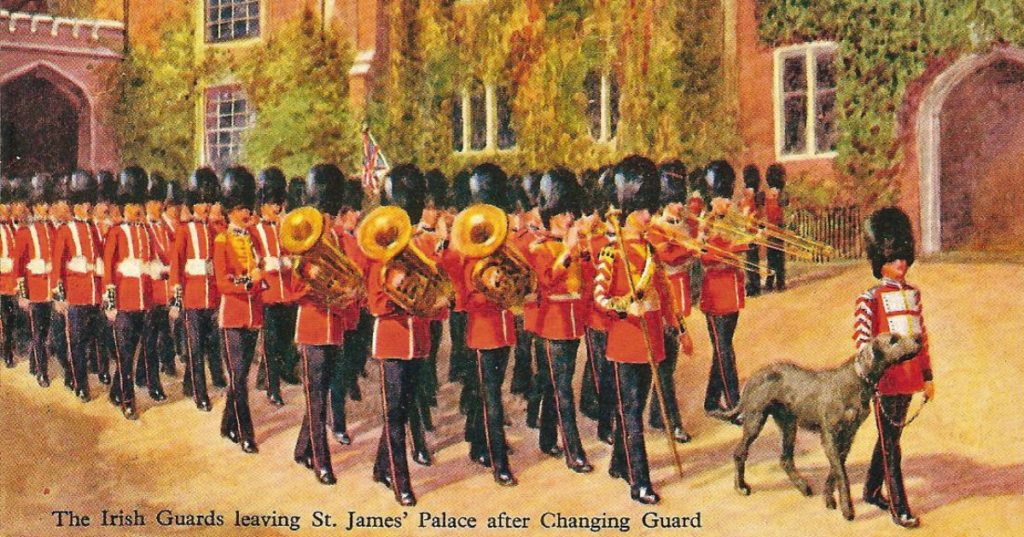
I have a Holland & Holland leather double gun case which is embossed with “Captain R. C. Alexander, Portglenone House, Co. Antrim”. It was purchased by my father at Knight, Frank & Rutley in 1970 from the Estate of Major R. C. Alexander. It still contains all the accessories as purchased.
Having found your above article, I was wondering if photographs of the above would be of interest for your narrative?
Hi John! Thanks for the comment. Absolutely, yes! Would love to see pics of the gun case with the embossing. Fascinating stuff.
Thanks.